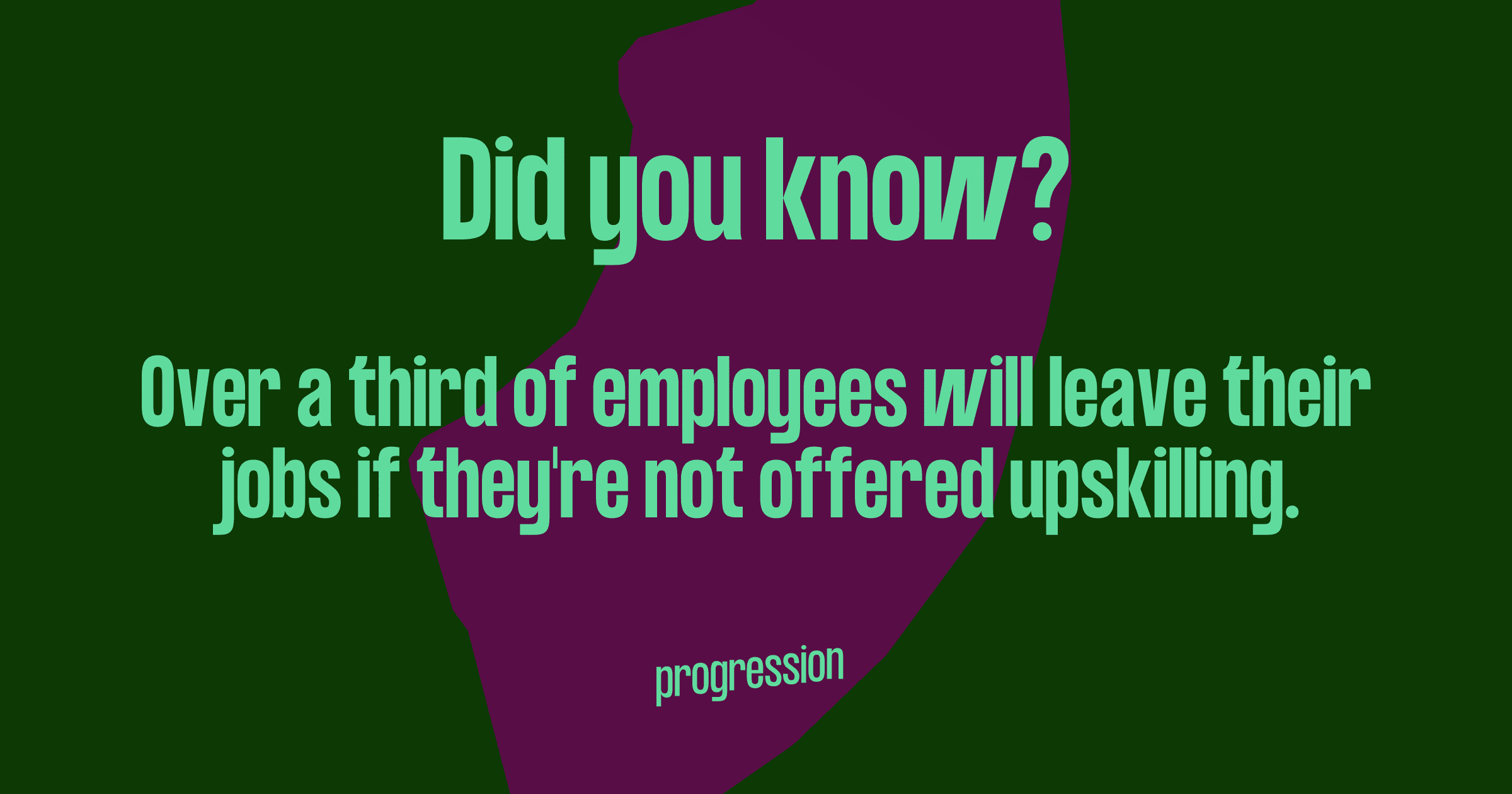Employees are increasingly looking – and leaving – for career progression.
Unless you want to face turnover turmoil in a matter of months (and risk losing up to 200% of each employee’s annual salary), you’d be wise to keep your employees’ career progression top of mind. And to not treat career growth as an afterthought.
What better time to do so than when hiring? Aligning hiring and internal career growth makes sense for employers who want to help their teams grow careers, not just jobs. And in all honesty, it’s essential.
Follow along as we guide you through top reasons why aligning career growth with hiring makes sense for your company as you onboard new talent.
Why is aligning hiring and internal career growth important?

There are umpteenth benefits for this, but we’ll stick with some of the strongest.
For starters, it’s well known that employee performance influences company growth. This means showing an employee you’re invested in their growth from the get-go is a strategic business move.
Aside from this, other benefits to aligning hiring and internal career growth include:
You address employees’ future aspirations
(Almost) no one starts a job, planning to never do or be anything more. So, when you align hiring and internal career growth, you’ll know exactly which position your employees aspire to someday.
Also, keep in mind that while corporate ladders are fine and dandy, not everyone wants to climb them. Some will want to move laterally. This is where a strong career progression framework can come into play (more on this later!).
You are better equipped to help employees progress
When you align hiring and career growth, you can set up systems to support employees’ career paths as well as their skills and interests. This is simpler to do when you build a career progression framework.
Frameworks let you set parallel tracks that share the same core skills across the company (i.e. skills are transferrable across departments). As in, no matter employees’ career trajectories, your company can offer enriching work opportunities aligned with them. This will help them progress as they see fit.
Employees will appreciate this flexibility and reward you with their time. (In other words, you’ll retain employees as they won’t seek other opportunities outside of the company.)
It’s a win-win.
You can improve organisational structure
When you hire with growth in mind, you can assess if your organisation is structured effectively and make any needed changes to align that structure with strategic goals and employee expectations.
You can make frameworks a part of your regular feedback (another shameless plug, we know). And you could also try mentoring, coaching, training, and other routine check-ins. All of these improve organisational structure and, therefore, lead to higher employee retention.
But no matter the initiative, keep in mind this one thing: Careers-driven retention takes more than just a framework.
You are in a better position to attract top talent
You only have seven seconds to make a strong first impression. Like, for real. By the time the interview starts, the applicant already has a strong opinion of you and your company. Play this to your advantage.
Since people tend to be attracted to companies where interviewers are more personable and interested in them as a candidate, showing concern in their potential growth can go a long way in attracting the right top talent.
You increase job satisfaction and retention

Over a third of current employees say they’d leave their job if they weren’t offered training to learn new skills.
When employees don’t see a commitment in helping them gain the skills they need for career progression, they’re open to offers from competitors who are investing in learning, development and growth.
At the end of the day, career growth increases employee productivity, job satisfaction and retention.
You increase engagement
When employers couldn’t care less about helping employees grow in their careers, employees lose interest in their jobs and the company. (Can’t really blame them!) This disengagement negatively affects company performance.
(And instead of continuing to go down this slippery slope, set your team up for success with proper training and development. It’s one of the five steps to improve employee engagement.)
You become a reputable employer
A lot of employees want career growth. Invest in your team, and you’ll set yourself apart as an employer of choice.
Need we remind you of the introductory stat? Remember that employees are actively hunting for roles that will provide them with the necessary tools to grow. Provide those tools, and it’ll be much easier for you to recruit and retain top talent.
Moving forward
At the end of the day, aligning hiring and internal career growth is no longer a nice-to-do. It’s a must-have to stay competitive and make sure top talent knows you’re as invested in them as they are in you.
And while you’re at it, why not take some pointers on how to build a company culture that prioritises employee growth? Take career growth full circle for the good of your team – and you.










 Sign up with Google
Sign up with Google  Sign up with Email
Sign up with Email